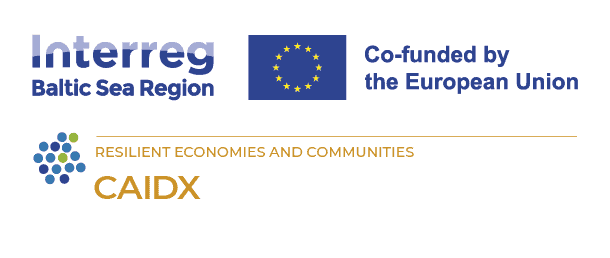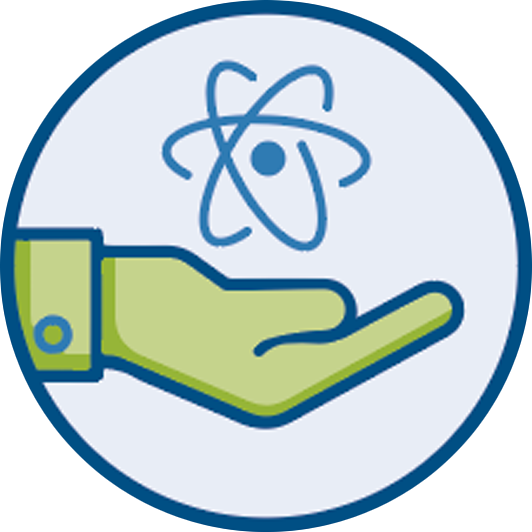
Clinical AI Pathway Tools: Piloting Results of the Project Initiation Phase Tools
14 January 2025
The CAIDX project aims at developing tools and guidelines to support the development and implementation of AI solutions within healthcare. One part of the project focuses on developing and testing tools for supporting early phases of innovation projects, including identifying clinical needs, choice of path for the project, and setting up collaboration agreements between the public and private sector. The three tools Need identification, Game plan, and Guiding principles for public-private cooperation have been pilot tested and refined.
Description of the tools
The Need identification tool is intended to be used to define a clinical need, before initiating an innovation project. The tool helps the researcher/clinician to systematically and in-depth consider various aspects regarding the problem, intended solution, and required resources. It can also be used by hospital management as a basis for decision making, in comparing and prioritizing between various proposed AI projects. The tool contains twelve questions which are to be answered by the researcher/clinician. The answers provide a good overview of the intended innovation project.
The Game plan can be used when a clinical need has been identified which requires a solution. The Game plan gives a clear overview of possible paths to take when entering the process of developing AI tools, i.e., research collaboration, in-house research and development, co-development, or purchase. The tool helps choosing a suitable path, depending on the nature of the innovation project. The Game Plan is supposed to be used at an early stage of a project to highlight factors that will decide the most suitable path for the project.
The Guiding principles for public-private cooperation is intended to support clinicians/researchers who are interested in learning more about important aspects to consider when writing a cooperation agreement with an external party, e.g., a private company. It should be noted that the document does not form a basis for a contract, and the tool is not a substitute for consultation with the legal department at the medical center but should be seen as a valuable complement. The Guiding principles for public-private cooperation gives an overview of main topics that needs to be regulated in cooperation agreements and provides essential guidance for clinicians/researchers when entering a cooperation project with a private company. The tool includes aspects to consider to allow a future procurement of the solution that are to be co-developed. This means that this document is only relevant for cooperation projects.
Piloting
The tools were piloted to explore their useability in an international context, and to collect feedback on how they could be revised and further improved. During the pilot phase, the three tools described above were tested on 13 different use-cases (i.e., real-life AI-projects) across all six CAIDX partner countries (Denmark, Estonia, Finland, Germany, Poland, and Sweden). A pilot manager at each site showed and explained the tools for researchers/clinicians/project managers representing the various use-cases. A semi-structured interview guide was used for interviewing the researchers/clinicians/project managers about their thoughts, experiences, and the perceived usefulness of the tools. The feedback from the pilot interviews were considered in the revision process when finalizing the three tools.
Results
The pilot interviews indicated that the developed tools are considered valuable and could be very useful for clinicians and researchers who are entering AI projects. Below, we present some quotes from the pilot interviews.
Quotes regarding the tool Need identification:
“Clearly helpful. It asks exactly the necessary questions to come to a well thorough concept of your tool to be developed.”
– Martin Dyrba, PhD, Rostock University Medical Centre, Germany. Use-case: Deep Learning InteractiveVis
”Valuable at project’s inception because it prompts the applicant to reflect on essential questions.”
– Surenth Nalliah, MD, Aalborg University Hospital, Denmark. Use-case: Rethinking CT Image Analysis for Chronic Pancreatitis
”Important as a basis for evaluating and prioritizing R&D projects, including AI projects. It provides a structured way to assess critical factors.”
– Krzysztof Tupikowski, MD, PhD, Head of Urological Department in Lower Silesian Oncology, Pulmonology and Hematology Center, Wrocław, Poland. Use-case: AI-enhanced radiology detection, reporting and clinical decision-making in prostate cancer diagnosis
Quotes regarding the tool Game Plan:
“The game plan provides a good overview of the different paths to follow if one seeks collaboration between the public health sector and industry.”
– Surenth Nalliah, MD, Aalborg University Hospital, Denmark. Use-case: Rethinking CT Image Analysis for Chronic Pancreatitis
”The Game Plan is very helpful, and I believe that if it had been available earlier, it would have allowed for a more comprehensive framework for collaboration. It’s designed to take a holistic view of the entire project, not just from the perspective of one group, such as clinicians. By positioning our project within the Game Plan, we could have addressed important aspects across all involved stakeholders, including agreements, post-project outcomes, and whether the product would be certified. This would have enabled us to plan next steps more effectively, in collaboration with both clinicians and AI developers. The Game Plan helps take into account multiple perspectives, which might appeal to a more strategic and inclusive approach.”
– Krzysztof Tupikowski, MD, PhD, Head of Urological Department in Lower Silesian Oncology, Pulmonology and Hematology Center, Wrocław, Poland. Use-case: AI-enhanced radiology detection, reporting and clinical decision-making in prostate cancer diagnosis
Quotes regarding the tool Guiding principles for public-private cooperation:
“The guide is good and informative. It would have been useful for my research group when we established a development collaboration around the AI triage prototype with an external AI developer. We received help from the region’s lawyers but never got a complete overview of which elements were crucial to clarify in the collaboration agreement.”
– Lene Siggaard, MD, PhD, Aalborg University Hospital, Denmark. Use-case: IAMHear
“The Guiding principles-document seems very helpful since it can prepare the researcher before starting the negotiations with a company. It can help the researcher identify key aspects that should be non-negotiable.”
– Stefan Jovinge, MD, PhD, President of the Department of research, development, education and innovation at Skane University Hospital, Sweden. Use-cases: TICU and SPICU
The results from the pilot interviews indicate that these CAIDX tools can be truly helpful for researchers and clinicians who are entering AI innovation projects, i.e., at an early stage of their projects.
The finalized tools will be published on the CAIDX website and will be part of the overall CAIDX toolbox which will be presented by the summer of 2025. We hope that you will find the tools useful for your ongoing and/or upcoming AI-projects!
#CAIDX #AI #Healthcare #HealthcareInnovation #DigitalHealth #AIinHealthcare #MadeWithInterreg #Interreg Baltic Sea Region #RegionSkåne #Contracting





